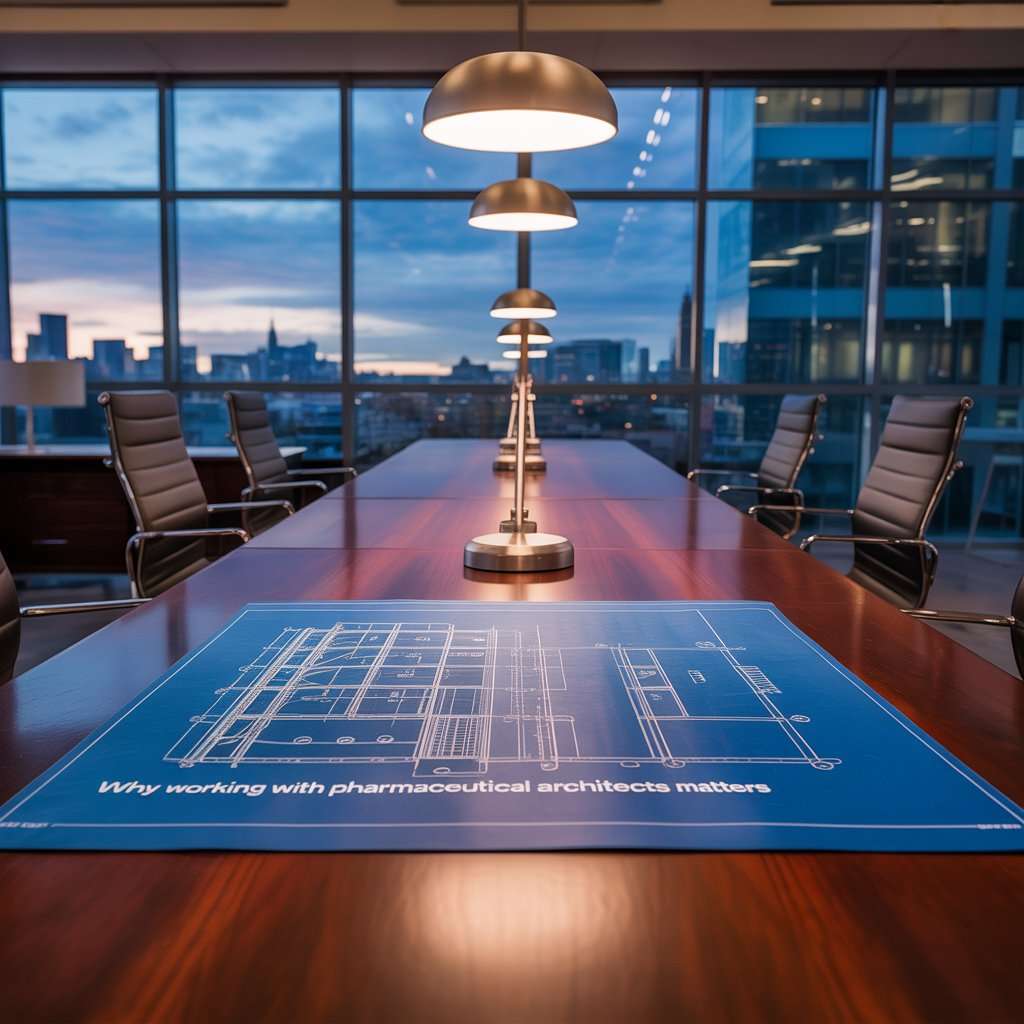Are you planning to build or upgrade a pharmaceutical manufacturing facility? The stakes are high, and even small design mistakes can lead to costly delays or regulatory issues. Working with specialized pharmaceutical architects ensures your facility meets strict standards like GMP-compliant architectural design and regulatory-compliant facility design (USFDA, MHRA, TGA). In this post, you’ll learn why partnering with experts in pharmaceutical facility architectural design is critical, how it saves time and money, and what to look for in a top pharmaceutical consultant in India. Let’s dive into the key reasons this expertise matters.
Why Pharmaceutical Architects Are Essential
Ensuring Compliance with Global Standards
Pharmaceutical facilities must adhere to stringent regulations from bodies like the USFDA, MHRA, and TGA. A single oversight in regulatory-compliant facility design can lead to failed inspections or production halts.
- Expertise in regulations: Pharmaceutical architects understand WHO-GMP facility design and PIC/S-compliant facility architecture, ensuring your facility meets global standards.
- Avoid costly rework: Proper design from the start prevents expensive fixes during audits.
- Example: A biopharmaceutical plant architectural design must include cleanroom layouts that comply with GMP standards to avoid contamination risks.
Optimizing Pharma Plant Layout Design
A well-planned pharma plant layout design maximizes efficiency, safety, and productivity. Pharmaceutical architects create layouts that streamline workflows and meet regulatory needs.
- Key tips:
- Design for flow: Ensure raw materials, personnel, and waste move efficiently without cross-contamination.
- Plan for scalability: Allow room for future expansion in API manufacturing plant layout.
- Incorporate cleanrooms: Essential for cleanroom architecture for pharma to maintain sterile environments.
Specialized Design for Unique Needs
Different pharmaceutical sectors require tailored solutions. Whether it’s an oncology facility design, R&D facility architecture in pharma, or biosimilar manufacturing plant design, specialized architects deliver.
- Oncology facilities: Require advanced containment systems to handle hazardous drugs safely.
- R&D facilities: Need flexible spaces for evolving research needs.
- Medical device plant design: Must balance precision manufacturing with cleanroom standards.
How Pharmaceutical Architects Save Time and Money
Reducing Design Errors
Mistakes in pharmaceutical manufacturing facility design can lead to costly delays. Specialized architects minimize risks by:
- Conducting thorough site assessments.
- Using advanced tools for pharmaceutical engineering design services.
- Collaborating with regulatory experts to ensure compliance.
Tip: Choose a top pharmaceutical consultant in India with a proven track record in pharma architectural services to avoid unexpected costs.
Streamlining Project Timelines
Experienced architects manage projects efficiently, from planning to execution. They coordinate with engineers, contractors, and regulators to keep timelines on track.
Choosing the Right Pharmaceutical Architect
What to Look for in a Consultant
Not all architects are equipped for pharmaceutical facility architectural design. Here’s what to prioritize:
- Experience: Look for firms with expertise in GMP-compliant architectural design and PIC/S-compliant facility architecture.
- Local knowledge: A top pharmaceutical consultant in India understands local regulations and supply chains.
- Portfolio: Check for successful projects in API manufacturing plant layout or cleanroom architecture for pharma.
FAQ: Common Questions About Pharmaceutical Architects
1 . What is GMP-compliant architectural design?
A… It refers to designing facilities that meet Good Manufacturing Practices (GMP) standards, ensuring safety, quality, and compliance with regulations like WHO-GMP facility design.
2. Why is cleanroom architecture important in pharma?
A.. Cleanrooms prevent contamination in pharmaceutical manufacturing facility design, critical for producing safe drugs and medical devices.
3 . How do pharmaceutical architects differ from regular architects?
A.. They specialize in pharmaceutical engineering design services, understanding complex regulations and unique needs like oncology facility design or R&D facility architecture in pharma.
4. Can a pharmaceutical architect help with medical device plant design?
A .Yes, they design facilities for medical device production, ensuring compliance with regulatory-compliant facility design standards.
Conclusion
Working with specialized pharmaceutical architects is a game-changer for building or upgrading a pharmaceutical manufacturing facility. They ensure GMP-compliant architectural design, optimize pharma plant layout design, and save you from costly mistakes. Whether you’re planning an API manufacturing plant layout or a biosimilar manufacturing plant design, the right expertise makes all the difference. Ready to start your project? Contact a top pharmaceutical consultant in India to bring your vision to life. Share your thoughts or questions in the comments below!
Explore our pharma consultancy services or contact us for a free consultation on your pharmaceutical facility architectural design needs!

